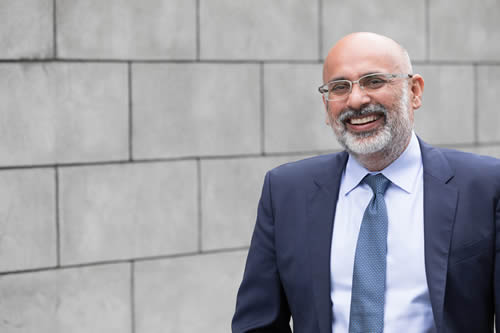An interview with XPLANE client partner and Portland State University thought leader Sukhwant Jhaj about using design thinking to drive change.
Why design thinking? We have found that a lot of people who are thinking about working this way for the first time they see that as a liability because it’s such a huge investment in time and resources— for a lot of people, it just looks like a barrier. Why do you think design thinking is important? Why were you ready to make that kind of commitment?
JHAJ: First and foremost, we are after transformational change. We are interested in creating breakthrough moments and that requires deep insight into the experience of our audiences (our students and our faculty and staff members). I would argue that design thinking offers you a unique way into that sort of collection of insights.
Doing what you’re doing currently a little bit better is not going to get you there, right? You have to rethink where things are, who your audience is, what their needs are, what comes in the way, and how you take those barriers out of their way. What excites your colleagues? How can you support that? How can you build connections between the different audiences? All of those things require an understanding of the experience and that’s what design thinking brings you closest to.
“If you are interested in transformational change, not just incremental improvement, or if you’re interested in rethinking the way you’re doing things to create a positive forward-looking space, design thinking is a great way to move forward.”
— Sukhwant Jhaj
One thing that was really innovative about your work and approach is that you’re deeply engaging with stakeholders and end-users to help define what the solutions may be rather than relying on this deep qualitative or quantitative analysis. What’s your point of view is on why that’s so important?
JHAJ: You can develop strategy in very traditional ways, or you can develop strategy in this distributed way where you engage large groups of people. You’re not giving them the problem to solve — they themselves are defining the problem. And that’s what’s at the heart of good design: rethinking the problem that you’re trying to solve.
When you open that process up, it allows you to become aware of the blind spots in your thinking. That has been our entry into working with students and advisors: posing a problem and then engaging them in a very structured way. We still have some of the experts and front-line staff proposing solutions, and then we are bringing students in to critique the solutions, prioritize things, and identify what we ought to be working on. It’s not, in the truest sense, an open innovation space, but it has this idea of combining expertise and openness while allowing you to draw on the knowledge your colleagues have, but at the same time … You know the only way to be aware of what you don’t know is when you work with others. It is a great way to address things and uncover new solutions.
Why visual thinking? What role did visual artifacts have in the process and what was their impact?
JHAJ: There are certain ways in which we think and drawing is not a well established way in which scholars think. Scholars write, they present… so what happens when you all of a sudden ask them to draw? You very quickly go back to that place of playfulness, a place that is empty of pretense. You can think in very abstract ways through drawing, but it doesn’t have the ritual associated with scholarly thinking and writing.
To me that’s really beautiful because you want to cut through a lot of this noise that exists and very quickly get to the heart of the problem.
Then there is the making of the artifact itself. For us, the act making of the artifact itself was a positive thing. Reports sit on shelves. Drawings (and artifacts) are displayed proudly by people who were involved in the work. And people look at them and there’s a conversation. This making of the artifact is a way to bring the community together.
It was a really powerful thing for us, because we were able to overlay the making of the artifact with our change process. As we went ahead and made our drawings, we also brought this community together and helped them develop a common ground because throughout the process you have to come to agreement on what you’re going to draw and how you are going to present an idea. What a wonderful way. It’s not something that you have to read, like a 500-page report, to get to the heart of it. There it was, right in front of you, being communicated as simply as you can: This is what we are doing and we can agree and disagree, but at least we knew what is it that we were after. It was diagrammatic and easy to grasp.
